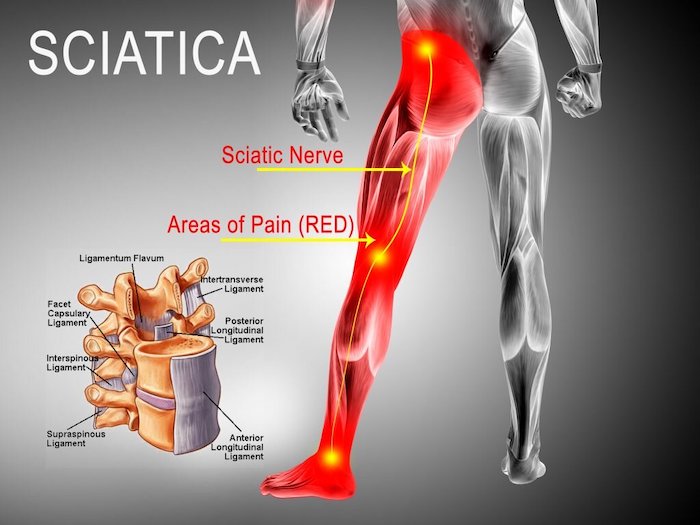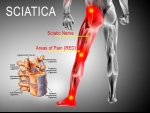
While life may be full of coincidences, we don’t believe that the general weight problem and the high incidence of sciatica pain is one of them. To be sure, weight isn’t the only risk factor when it comes to this type of back pain, but it can certainly play a role.
We help our clients find solutions for both acute and chronic pain, helping them lead active lives. And when it comes to lower back pain, sciatica is one of the more common complaints we treat. In an effort to promote preventive care, we want to partner with our patients through education, giving them the tools, they need to avoid back pain in the first place.
To that end, we’ve pulled together the following on how your weight can cause problems for your sciatic nerve.
Behind Sciatica
To better understand sciatic pain, it’s helpful to first take a look at the anatomy of your lower back. And when we say lower back, we’re referring mostly to the five large vertebrae that make up your lumbar spine. These vertebrae are arguably the hardest working of the entire 33 that make up your spine as they’re responsible for a great deal of your foundational support, mobility, and range of motion in your upper body.
Your lumbar vertebrae are separated by discs, which provide critical cushioning and support. Your discs are made up of a tough outer layer of collagen that houses a jelly-like substance on the inside.
Your sciatic nerve is the largest nerve in your body and starts in your lower back and splits to run down the back of both your buttocks and legs. This nerve is created from the nerve roots found along your lumbar spine.
When sciatica strikes, it’s typically because one of your discs has herniated or bulged, which irritates the nerve roots in the area. The hallmarks of sciatica are pain, numbness, and/or tingling that radiates down one leg, though the pain can be localized in your lower back.
The Weight Piece of The Sciatica Puzzle
There are many conditions that can compromise your discs and lead to sciatica, including:
- Repetitive movements that lead to excessive wear-and-tear
- Degenerative disc disease
- Prolonged sitting
- Carrying extra weight
And here we get to your weight at last. Your spine is engineered to carry a certain amount of weight, and when you add to this, you create additional stresses that can contribute to the breakdown of your discs. Even if your discs are naturally succumbing to age, extra weight can speed this process up considerably.
To give you a visual, think of your discs as jelly-filled donuts that are stacked up. If you apply pressure to this tower, you will eventually reach a breaking point and the donuts will begin to leak. We know the visual is a bit silly, but it paints a clear picture of how weight can lead to sciatica as your discs succumb to the added pressure of the extra pounds.
While being overweight isn’t the only risk factor when it comes to sciatica, it certainly isn’t helping matters. Ultimately, any steps that you take to alleviate some of the pressure on your spine through weight loss are great steps for your overall health and mobility.
If you’d like to learn more about the relationship between sciatica and your weight, please contact one of our four locations.
Precision Pain Care and Rehabilitation has two convenient locations in Richmond Hill – Queens and New Hyde Park – Long Island. Call the Richmond Hill office at (718) 215-1888, or (516) 419-4480 for the Long Island office, to arrange an appointment with our Interventional Pain Management Specialist, Dr. Jeffrey Chacko.













